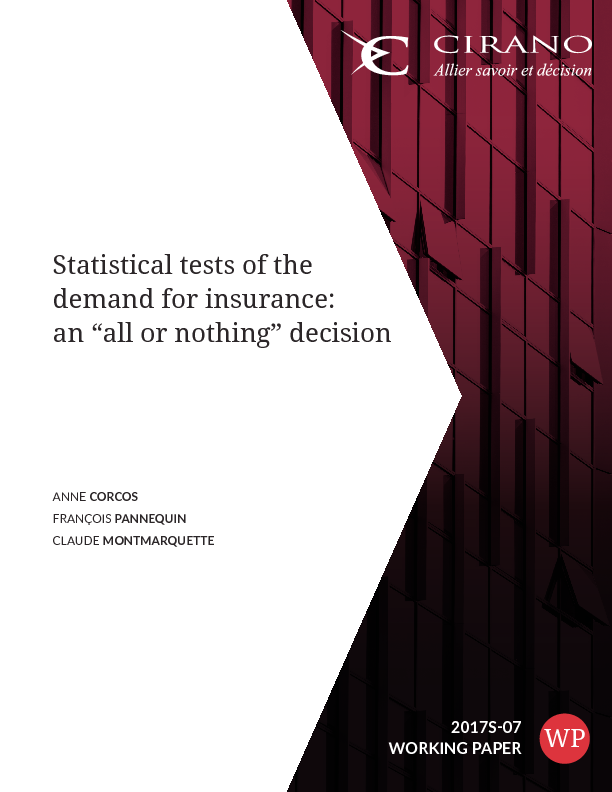Statistical Tests of the Demand for Insurance: An “All or Nothing” Decision
Several theoretical models and empirical results stress an unexpected all-or-nothing insurance behavior. Using experimental data of Corcos et al. (2017), who developed an extended version of Mossin’s traditional theoretical demand for insurance and provided non-parametric tests, this paper presents descriptive statistical analyses and econometric tests studying whether these experimental data comply with the all-or-nothing hypothesis. Our findings support this assumption for both risk averters and risk lovers. When this all-or-nothing behavior fails to meet Expected Utility predictions, it highlights a lack of responsiveness of individuals to insurance prices. When facing a more-than-actuarial insurance price, risk averters keep buying full insurance rather than partial insurance. A zero fixed cost holds risk lovers in the insurance market where they choose full instead of waive insurance. The bimodal nature of decisions might create an opportunity for the authority for driving people to enter the insurance market where they then buy full insurance.




